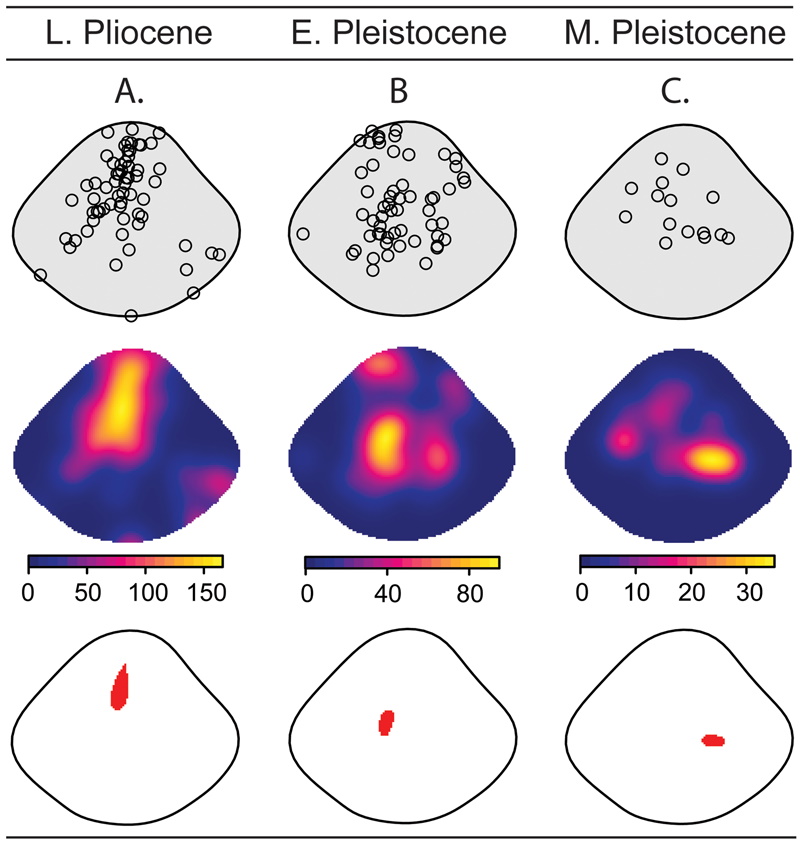
BLACKBURN – Spatial point pattern analysis of traces (SPPAT): An approach for visualizing and quantifying site-selectivity patterns of drilling predators
Alexis Rojas, Gregory P. Dietl, Michal Kowalewski, Roger W. Portell, Austin Hendy, and Jason K. Blackburn
Article first published online: 05 MAY 2020 Paleobiology
DOI: 10.1017/pab.2020.15
ABSTRACT: Site-selectivity analysis of drilling predation traces may provide useful behavioral information concerning a predator interacting with its prey. However, traditional approaches exclude some spatial information (i.e., oversimplified trace position) and are dependent on the scale of analysis (e.g., arbitrary grid system used to divide the prey skeleton into sectors). Here we introduce the spatial point pattern analysis of traces (SPPAT), an approach for visualizing and quantifying the distribution of traces on shelled invertebrate prey, which includes improved collection of spatial information inherent to drillhole location (morphometric-based estimation), improved visualization of spatial trends (kernel density and hotspot mapping), and distance-based statistics for hypothesis testing (K-, L-, and pair correlation functions). We illustrate the SPPAT approach through case studies of fossil samples, modern beach-collected samples, and laboratory feeding trials of naticid gastropod predation on bivalve prey. Overall results show that kernel density and hotspot maps enable visualization of subtle variations in regions of the shell with higher density of predation traces, which can be combined with the maximum clustering distance metric to generate hypotheses on predatory behavior and anti-predatory responses of prey across time and geographic space. Distance-based statistics also capture the major features in the distribution of traces across the prey skeleton, including aggregated and segregated clusters, likely associated with different combinations of two modes of drilling predation, edge and wall drilling. The SPPAT approach is transferable to other paleoecologic and taphonomic data such as encrustation and bioerosion, allowing for standardized investigation of a wide range of biotic interactions.
Read the full publication at Paleobiology